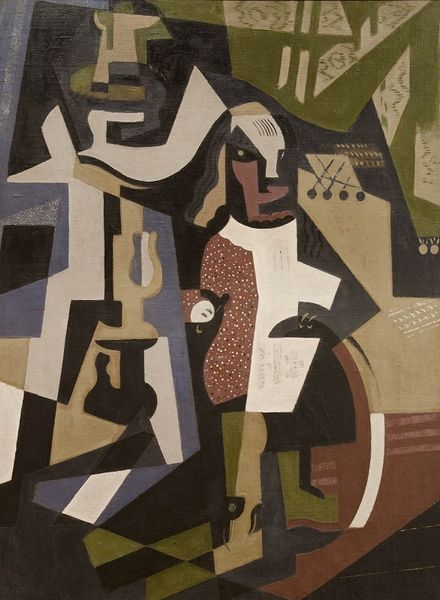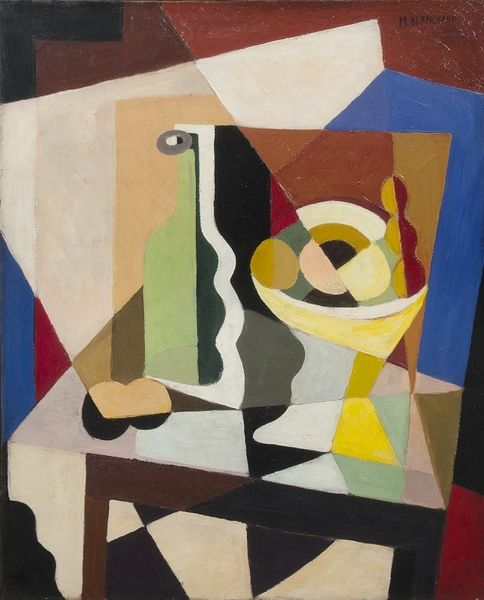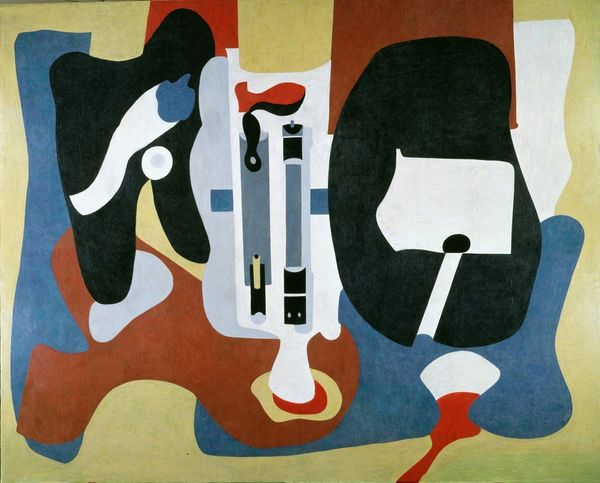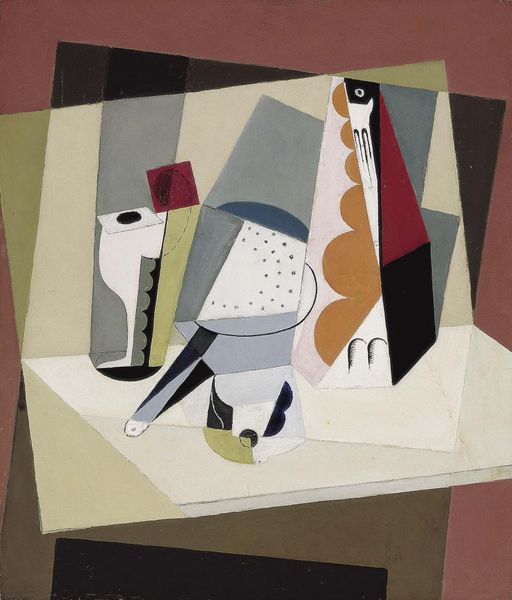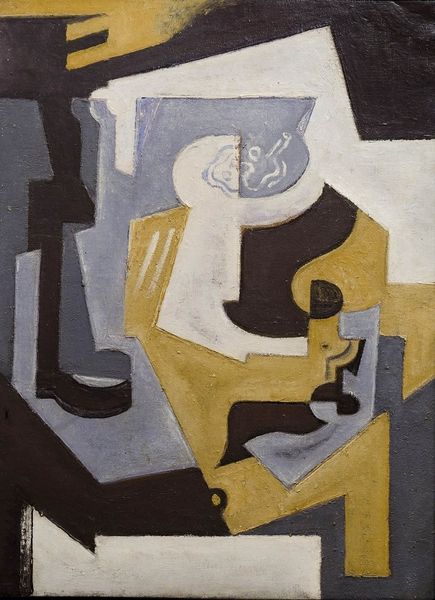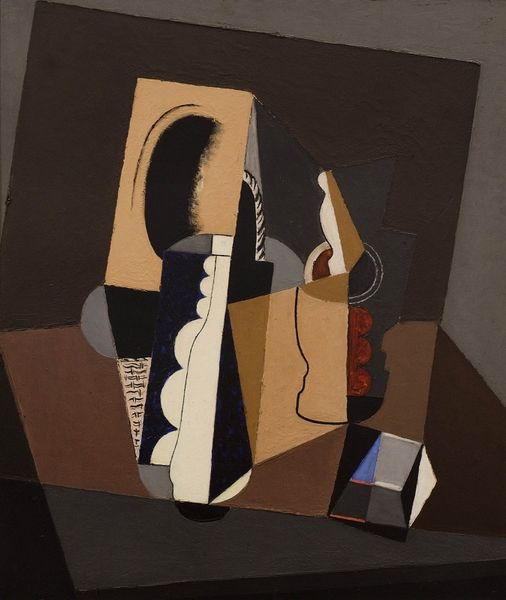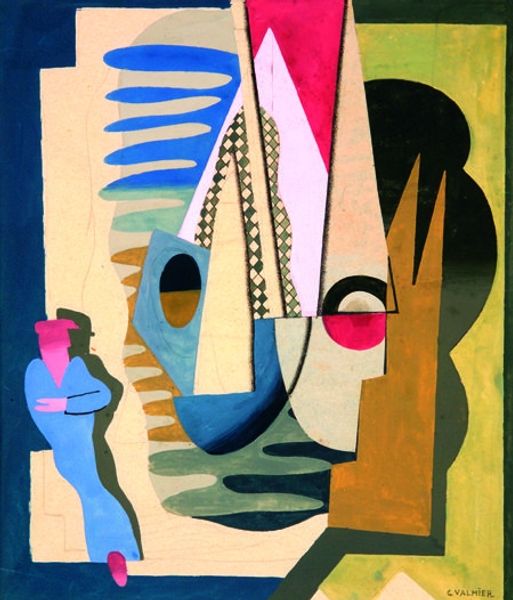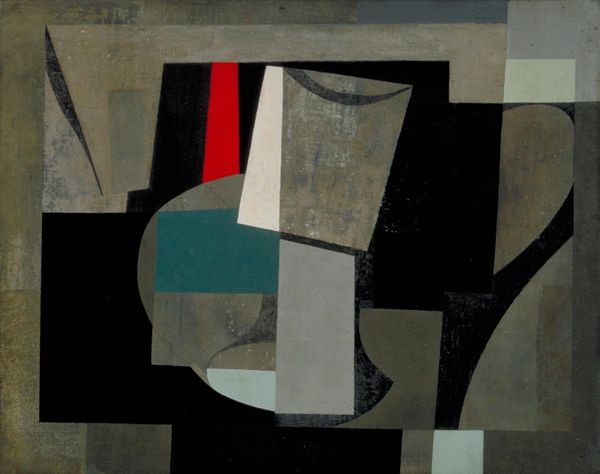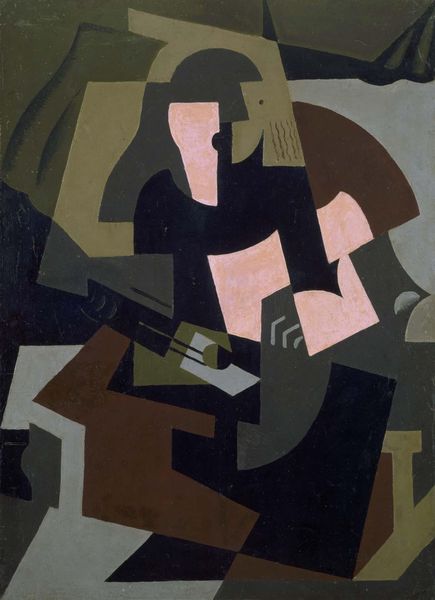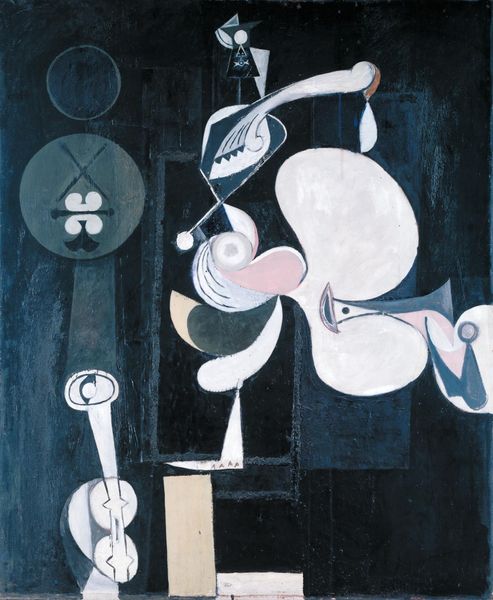
tempera, painting
#
portrait
#
cubism
#
tempera
#
painting
#
geometric
#
expressionism
#
abstraction
#
modernism
Copyright: Public Domain: Artvee
Curator: It’s almost eerie. These flattened forms create such an odd stillness. Editor: Indeed. Let’s explore Pablo Picasso’s "Pierrot et Arlequin à la terrasse de café," created circa 1920 using tempera on, it seems, a prepared ground. Note how he arranges the figures... Curator: Into a near-geometric, abstract pattern. Pierrot's ruff becomes an echoing rhythm of curves against the severe planes surrounding him. Even the cafe table appears less like a supporting surface and more like a fractured component. It seems we're left to decipher an intentionally distorted reality through structure and materiality. Editor: And within that reality, the iconography pulsates with commedia dell’arte shadows. Pierrot, the eternally lovesick fool, rendered with his customary pallor and conical hat—a figure perpetually yearning. Beside him, Harlequin, masked in that familiar diamond pattern and positioned to remind viewers of trickery and wit. Even the colors evoke emotions: that stark white of Pierrot signifies innocence while Harlequin’s somber palette speaks of secrecy. Curator: I see how those color choices contribute, especially considering how subtly modeled some of the flat planes appear. There’s barely a hint of volume yet such deliberate use of shade on each character. Editor: Yes, Picasso brilliantly captured not just characters but also emotions and hidden histories within the canvas. The cafe, usually a vibrant space of encounter, here becomes almost theatrical in its constructed stillness, heightening the alienation. The fact that they occupy different color grounds almost suggests opposing viewpoints, don’t you agree? Curator: Definitely! By orchestrating a fractured space and allowing each segment of color and shape to define areas that highlight isolation—almost opposing viewpoints. Editor: Studying how Picasso melds familiar icons within abstraction allows one to glimpse psychological terrains and cultural memory—still potent after a century. Curator: For me, reflecting on these figures through the artist’s geometric interpretation reveals his exploration of perspective... in multiple ways! It provides layers upon layers, allowing for varied levels of inspection and observation of his craft and vision.
Comments
No comments
Be the first to comment and join the conversation on the ultimate creative platform.
